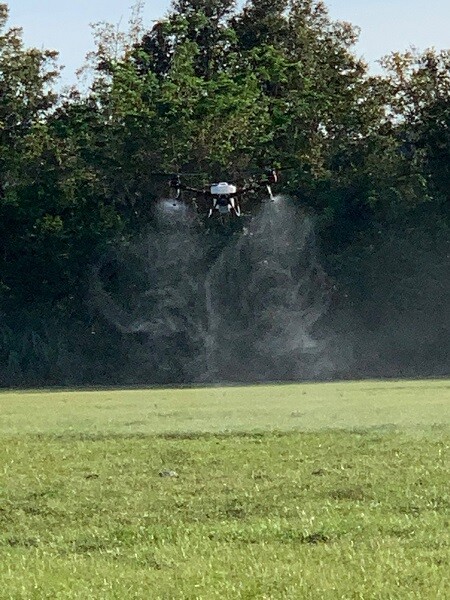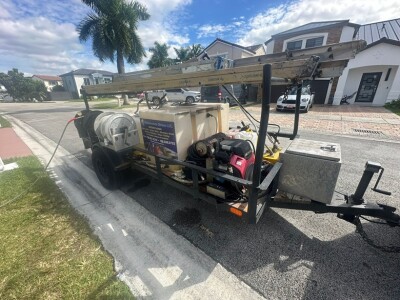While we wait for the Federal Aviation Administration (FAA) to release its much-anticipated Notice of Proposed Rulemaking (NPRM) for Part 108, a regulation of uncrewed aircraft flights beyond the visual range of the operator (BVLOS), it would be good to focus on what business models are making money today.
Given that investors have many options when it comes to finding places to park their money in the hope of a quick return on investment (ROI) it would be a good idea to know where drones are being used today to make a profit.
Let us begin by enunciating clearly the basic conditions that frame a successful business model in the pre-BVLOS era.
- Flights have to be conducted within visual range of the operator.
- No operations over people.
- No operations at night.
- The area to be flown would be preferably private property and under the jurisdiction of the organization in charge of the flight.
- The aircraft would be flying low and away from sensitive areas such as nuclear powerplants and airports.
So, now that we have the basic premises for acceptable missions, let us analyze the low hanging fruit for these markets.
Agriculture Spraying
It complies with every one of the requisites and is rapidly becoming a source of revenue, and profit, for companies willing to invest in the specialized drones and Part 137 certification required by the FAA to dispense chemicals from an aircraft. There is a major hurdle that still needs to be crossed in this industry and is the inclusion of uncrewed aircraft in the label of the chemicals used in aerial agricultural spraying, an industry that has existed for almost a century. Today, only traditional aircraft are included in these labels that are considered to be the guiding rule when applying chemicals to farms.
Infrastructure Inspections
This market niche complies with almost every requisite of our list with the notable exception of operations over private property. In this case, there are noteworthy exceptions such as public property inspections, such as bridges and overpasses. In the last few years, incredible advances in autonomy have allowed inspection companies to remove humans from dangerous dangling ropes and situations of high traffic that are less than ideal for men and women to be around. Today, drones can perform an entire bridge or cellular tower inspection in minutes completely autonomously and using more than one sensor, from conventional color imagery to false color and thermography.
Deliveries to Offshore Facilities
This one is a trickier segment given the distances and meteorological conditions that are prevalent over oceans, but there are companies today that have developed uncrewed aircraft with innovative, resilient designs that can withstand strong winds and carry heavy loads to considerable distances over water. These specifications can also be applied to the delivery of goods to islands and across bays and peninsulas. This segment matters greatly because today heavy trucks and diesel-powered ferries are carrying relatively small and light cargo across extensions of water that can be accomplished with a fully electric drone in minutes. Oil companies and postal services around the world are paying attention and engaging in these deliveries today.
Solar Panel Inspections and Cleaning
With the strong push towards clean energy, thousands of solar farms are sprouting all over the world covering acres and acres of unused land that now require constant monitoring and cleaning. This is an ideal use for uncrewed aviation given the low altitude required and the private nature of the area to be inspected or cleaned. New contraptions are constantly being designed and tested to be added to more and more robust aircraft that can spray and scrape thousands of solar panels per hour in an effort to reach a point of maximum coverage in record time. Constant exposure to the sun makes these panels susceptible to failure and regular inspections with thermographic sensors are needed to guarantee a continuous and stable output of solar energy. There is a variation of this business model for smaller firms and that is the inspection and cleaning of solar panel in private residences and this market niche will be the sweet spot for startups willing to learn the tricks of the trade of an ever-growing business.
Electric Transmission and Distribution Inspections
This is one of the most profitable and reachable market segments around today. These long corridors of transmission and distribution lines are all over the world, they extend for thousands of miles and are mostly located in remote areas and over private land strips that are constantly maintained for easy access to the towers and electric conductors. For years these inspections have been conducted using complex ground vehicles and expensive crewed helicopters, but recently a rapidly growing trend has emerged, using small, autonomous drones to conduct the inspections collecting megabytes of data in minutes and broadcasting them, sometimes in real time, to remote human inspectors. Now with the emergence of artificial intelligence (AI) most of these inspections can be done automatically and the entire process might one day be completely autonomous and independent of human supervision.
Cleaning of High-Rise Structures
Drones are revolutionizing cleaning practices of urban mid-rise building exteriors and windows, avoiding the high costs and dangers of manual labor by completely eliminating scaffolding and hanging platforms. Similarly, drones expedite the cleaning of wind turbines, accessing areas that are difficult for humans to reach. They quickly clear turbines of obstructions like dirt and ice, boosting efficiency and reducing maintenance downtime.
These are just six of the large number of business models that today are open to the use of uncrewed aviation for profit. Any investor looking to get in the action of one of the most promising technologies of the future, would be well advised to look into startups that are aiming at these low hanging fruits in a nascent industry.















Comments